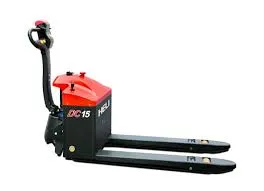


Understanding Manual Chain Blocks A Comprehensive Overview
A manual chain block, often referred to as a chain hoist or chain block, is a mechanical device used for lifting and lowering heavy loads. It employs a system of chains and gears to enable the user to exert a minimal amount of force to lift substantially heavier weights. These devices are widely utilized in various industries, including construction, manufacturing, and warehousing, owing to their efficiency and ease of use.
The fundamental principle behind a manual chain block revolves around mechanical advantage, a concept that allows users to lift heavy objects with reduced effort. The construction of a chain block typically includes a hook for attaching to a load, a series of gears, a lift chain, and a load chain. When the operator pulls on the lift chain, the gears engage and multiply the force applied, thus raising the load attached to the hook.
One of the significant advantages of manual chain blocks is their portability. Unlike electric hoists, which require a power source and can be cumbersome, manual chain blocks are compact and can be easily transported to different job sites. This makes them particularly valuable in scenarios where electrical access is limited or unavailable. Furthermore, they do not rely on batteries, reducing the risk of downtime caused by charging or electrical failure.

Safety is paramount when using manual chain blocks. Operators must ensure that the device is rated for the weight of the load being lifted, as exceeding this capacity can lead to failure, resulting in serious injury or damage. It’s essential to conduct regular inspections of the chain block to check for wear and tear, ensuring that all components are functioning correctly. Additionally, users should be trained in proper lifting techniques and safety protocols to minimize risks.
Another important consideration is the environment in which manual chain blocks are used. These devices can operate in various conditions, including rugged outdoor settings or controlled indoor spaces. However, environmental factors such as extreme temperatures, moisture, and the presence of corrosive materials can impact their longevity and effectiveness. Therefore, selecting a chain block that suits the specific conditions of the job site is crucial. For instance, stainless steel chain blocks are more suitable for rigging in corrosive environments.
Moreover, manual chain blocks come in various sizes and load capacities, making them adaptable for different applications. Small units may only handle a few hundred pounds, while larger blocks can lift several tons. This versatility extends to industries ranging from shipping, where they might be used to lift cargo containers, to factories, where they can support assembly line operations.
In conclusion, manual chain blocks are invaluable tools in various fields, providing an efficient means to lift heavy objects without the complexity or constraints of powered equipment. Their design and functionality offer significant advantages, including portability, ease of use, and versatility. However, it is vital for users to prioritize safety by adhering to load limits, conducting regular maintenance checks, and utilizing proper lifting techniques. By understanding and respecting these practices, operators can fully leverage the benefits of manual chain blocks while minimizing risks in the workplace.



